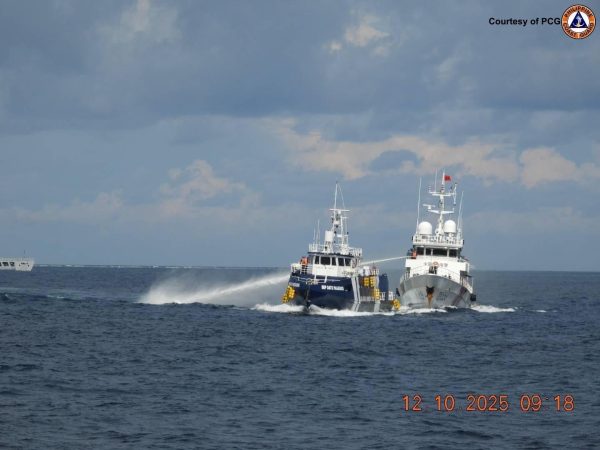In this image released by the Philippine Coast Guard, a China Coast Guard vessel fires a water cannon at a boat from the Philippine Bureau of Fisheries and Aquatic Resources in the vicinity of Thitu Island in the South China Sea, Oct. 12, 2025.
In recent months, China has been doubling down on the narrative that the Philippines is the regional “troublemaker” that repeatedly engages in unlawful behavior and provokes conflict and confrontation. This labelling is part of China’s systematic efforts to promote legal counterfactuals that undermine established international law in order to complement and support its South China Sea agenda.
This is an act of “lawfare,” a term that Charles Dunlap famously defined in 2008 as “the strategy of using – or misusing – law as a substitute for traditional military means to achieve an operational objective.” Over time, the meaning of lawfare has broadened to go beyond simple equivalence to kinetic war. Zakhar Tropin argued in 2021 that the term should also apply to “the use of law aimed at delegitimizing the actions of an opponent (or legitimizing one’s own) and to tie up the time and resources of the opponent and achieve advances in military activity or in any sphere of social relations.”
Let’s delve more deeply into China’s legal narratives regarding the Philippines and the South China Sea. First is the claim that the Philippines’ recent legislative enactments are unlawful and unsupported under the United Nations Convention on the Law of the Sea (UNCLOS).
In November 2024, President Ferdinand Marcos Jr.
Continue Reading on The Diplomat
This preview shows approximately 15% of the article. Read the full story on the publisher's website to support quality journalism.
